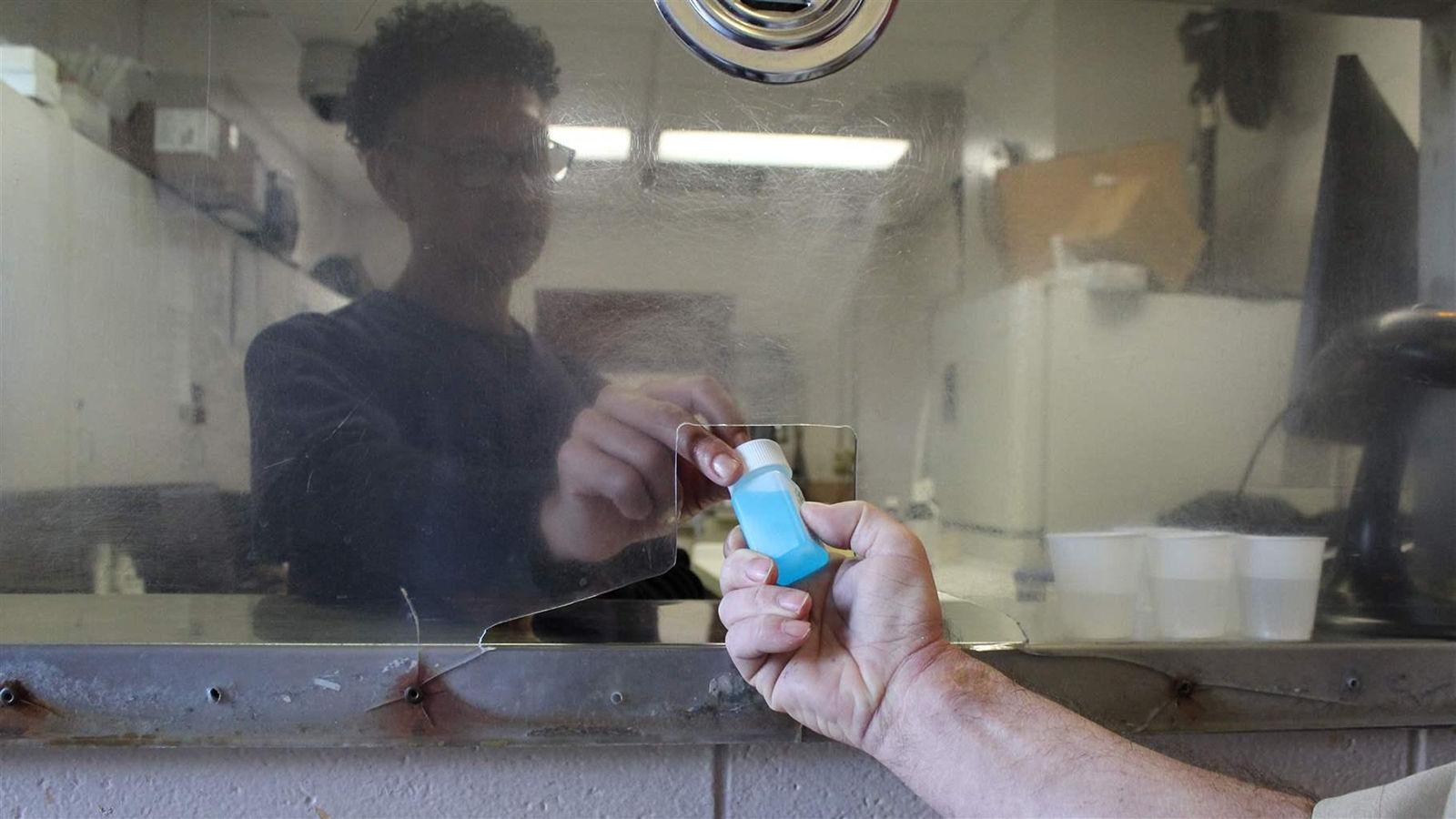This state has figured out how to treat drug-addicted inmates

Nurse John Sepulveda demonstrates how he hands inmates their daily doses of methadone at a Rhode Island Department of Corrections prison in Cranston. Nationwide, more prisons and jails are starting to offer inmates methadone and buprenorphine for the treatment of opioid addiction. (Courtesy of the Rhode Island Department of Corrections/TNS)
CRANSTON, R.I. - On a gray, bone-chilling morning, 18 men in a medium-security prison walked into an empty lunchroom and sat at stainless steel-topped tables, placing both hands palms down, as if they were about to receive a manicure.
Over the next few minutes, they received the anti-addiction medication buprenorphine under their tongues, administered by a nurse and double-checked by guards - with military precision. Then they were strip-searched before returning to their cells.
This half-hour routine happens every day, part of a program developed at the Rhode Island Department of Corrections to ensure that the clear strips of buprenorphine the inmates need to maintain recovery and stay focused on rehabilitation aren't diverted to black markets inside or outside the prison.
Nationwide, two-thirds of the country's 2.3 million inmates are addicted to drugs or alcohol, according to the National Institute on Drug Abuse. But only a small fraction of those who need treatment behind bars receives it.
The vast majority of the nation's nearly 2,000 state and federal prisons and 3,100 county and municipal jails do not offer addiction treatment that includes any of the three medications - methadone, buprenorphine and Vivitrol - approved by the U.S. Food and Drug Administration.
That's changing, albeit slowly. An estimated 120 jails in 32 states and prison systems in 10 states now offer evidence-based treatment for opioid addiction, triple the number in 2018.
Rhode Island started providing medication-assisted treatment, or MAT, for opioid addiction in its unified prison and jail system in 2016.
And with the help of Democratic Gov. Gina Raimondo and a $2 million annual budget, it is doing more than any other state to ensure that all inmates who need addiction treatment have an opportunity to receive the best care available.
That means offering all inmates with an opioid addiction, whether they were previously in treatment or not, a choice of one of the three FDA-approved medications, plus counseling.
Research shows that MAT is at least twice as effective as abstinence-based treatment that does not include medications.
In most lockups, people who are using heroin, fentanyl or painkillers when they enter are forced into painful withdrawal.
The simple detox or "cold turkey" methods, even combined with motivational classes, fail 90% of the time, said Dr. Jody Rich, an addiction researcher at Brown University who studies Rhode Island's correctional treatment program.
In many cases, that's because state and local governments say they can't afford it.
But advocates for prisoners argue that the failure to provide treatment to all inmates who need it also stems from a lack of concern for inmates' welfare and a lack of understanding about the effectiveness of the medications.
Addiction physician R. Corey Waller of consulting firm Health Management Associates works with prisons and jails in several states. He says corrections officials often incorrectly believe that inmates who have detoxed after entering prison don't need to take medications such as methadone or buprenorphine to control their cravings and prevent relapse, because they're in a controlled environment with scant access to drugs.
"But prisons aren't the sterile environment people think they are," he said. "The pressures to use drugs inside are even greater than they are outside. On the outside, you can escape pressures, go to your aunt's house or something. But when you're in a jail or prison, if you try to ignore the inmate in your yard who wants to sell you drugs, you're at risk for physical harm."
The program also offers inmates who have detoxed during incarceration the opportunity to start any of the three medications before discharge, with appointments set up for continued treatment on the outside.
Research at Brown University shows that the state's one-of-a-kind program has dramatically reduced overdose deaths after inmates are released. The number of recently incarcerated people who died from overdose dropped by two-thirds from 26 in the first half of 2016 - before the program started - to just nine in the first half of 2017, after the program's implementation.
And if you ask those who have graduated from the program, they'll tell you it changed their lives.
 Pathways Drug Rehabilitation Luxury Addiction Treatment & Detox Center
Pathways Drug Rehabilitation Luxury Addiction Treatment & Detox Center


